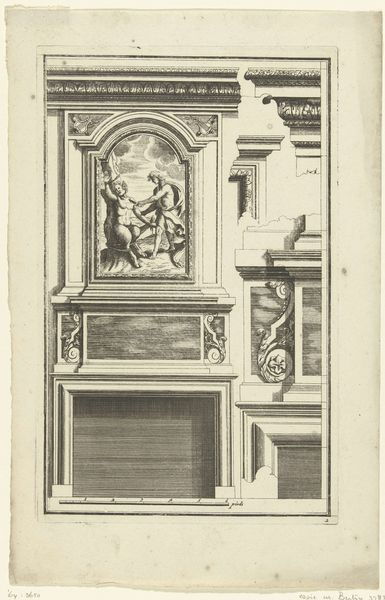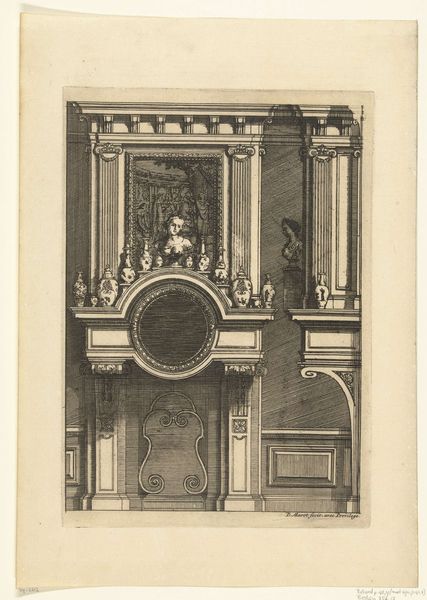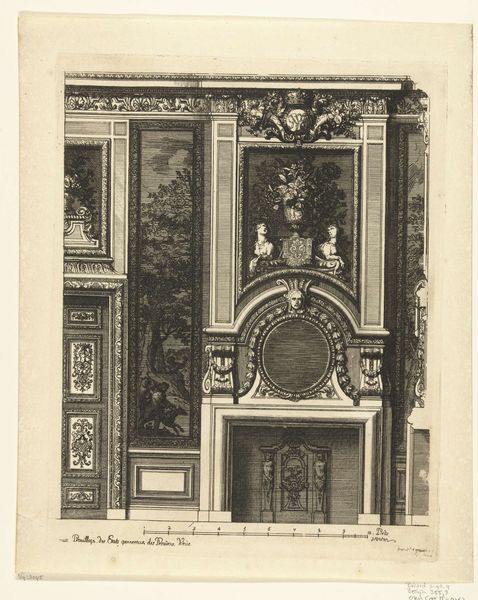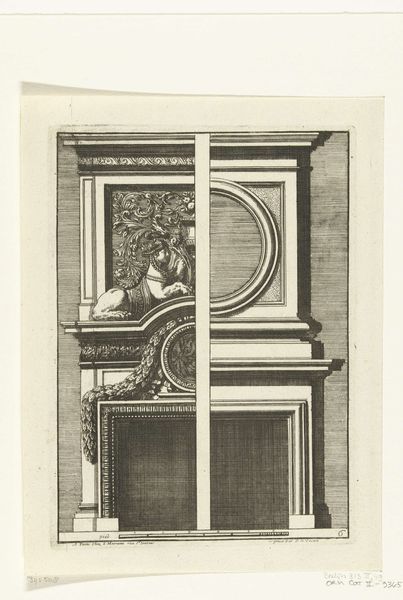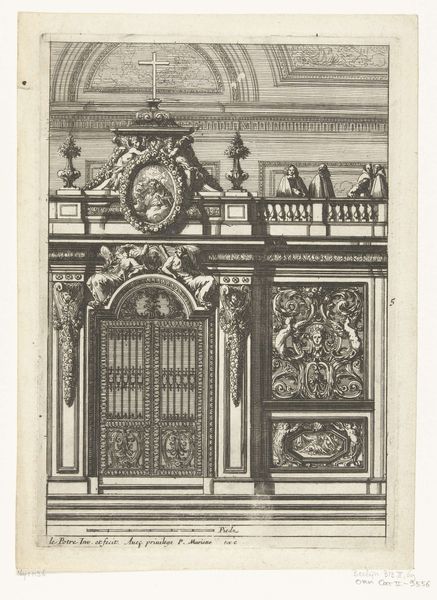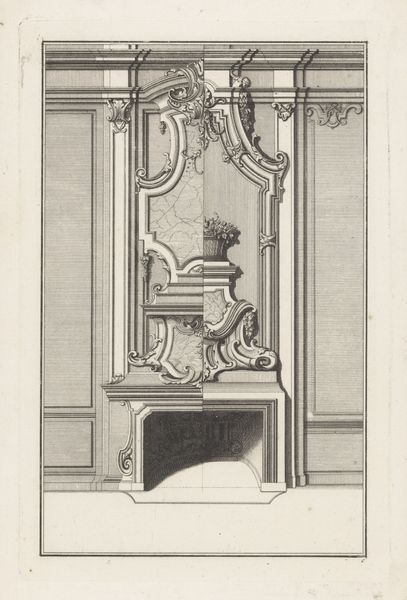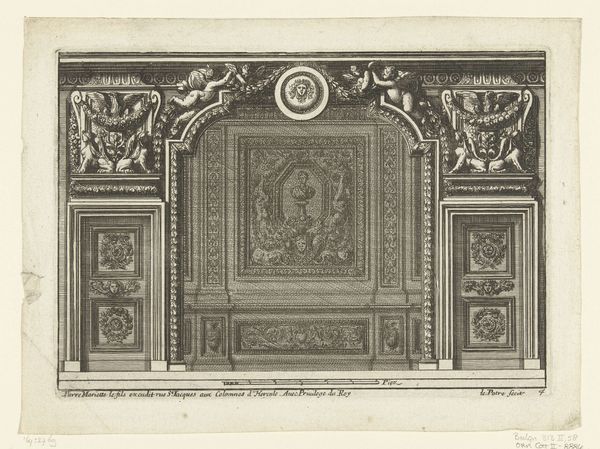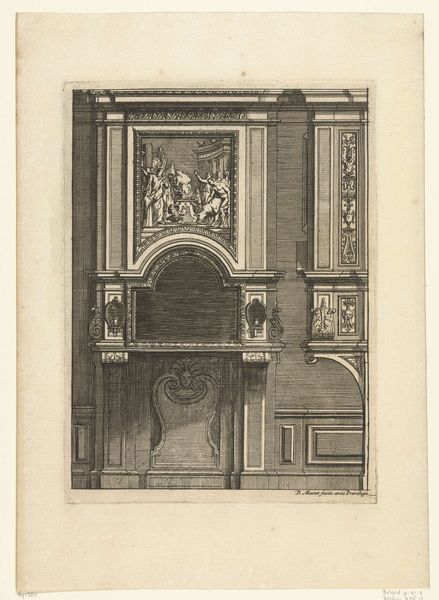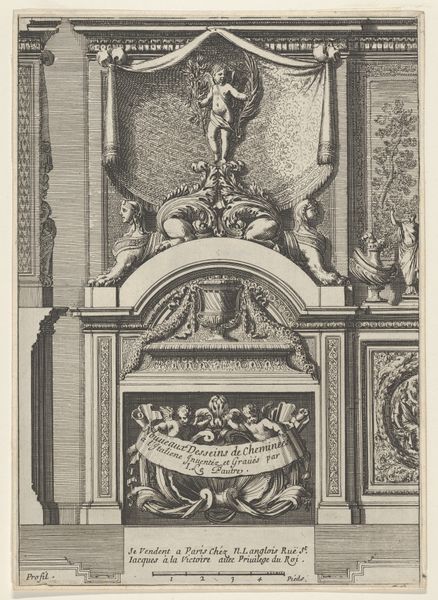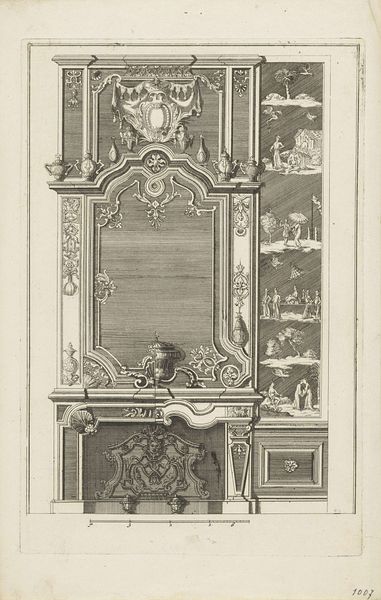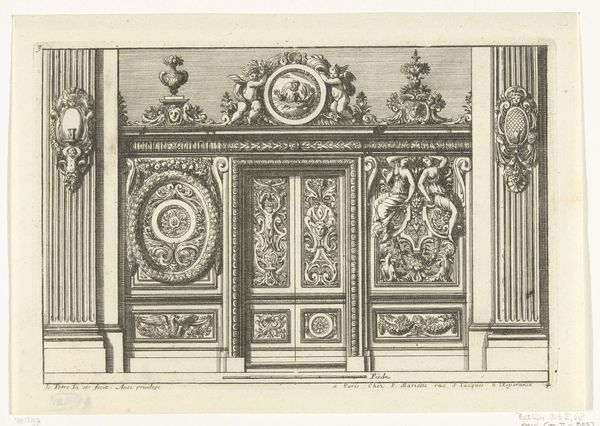
drawing, engraving, architecture
#
drawing
#
aged paper
#
toned paper
#
baroque
#
mechanical pen drawing
#
pencil sketch
#
old engraving style
#
sketch book
#
form
#
personal sketchbook
#
pen-ink sketch
#
line
#
pen work
#
sketchbook drawing
#
decorative-art
#
engraving
#
architecture
Dimensions: height 247 mm, width 195 mm
Copyright: Rijks Museum: Open Domain
Editor: So, this is "Onderboezem voor een wand," a drawing by Daniël Marot, before 1703, held at the Rijksmuseum. It's an architectural rendering, and it feels incredibly ornate and almost… theatrical. What strikes you when you look at this? Curator: What immediately stands out is the clear articulation of power through design. Marot, as a Huguenot designer, heavily influenced Baroque interiors. But beyond aesthetics, think about the socio-political statement this room makes. Who would inhabit such a space, and what power structures are being reinforced by this display of wealth and artistic dominance? Editor: Power structures… I see what you mean. All those decorative details feel almost overwhelming now. Was this level of opulence typical? Curator: It was a deliberate act. Spaces like this visually communicated status, employing classical allegories and symbols understood by the elite. The scale and materials also signaled dominion, reflecting both personal and dynastic ambitions. It begs the question, whose stories are left out when spaces like these become historical signifiers? Editor: That’s a really important question. I hadn't considered how much is unsaid. It is like the room screams privilege. It makes you think about the labour and resources it took to build. Curator: Precisely! How can we critically examine these historical designs in light of contemporary issues of economic and social justice? How do these visual signifiers impact present-day discussions on equity and representation? Editor: I guess looking at this drawing makes me see interior design not just as art, but as a form of political expression, a very material statement. Curator: Exactly, and by questioning those expressions, we start to understand the silent dialogues embedded in the history of art and power.
Comments
No comments
Be the first to comment and join the conversation on the ultimate creative platform.

